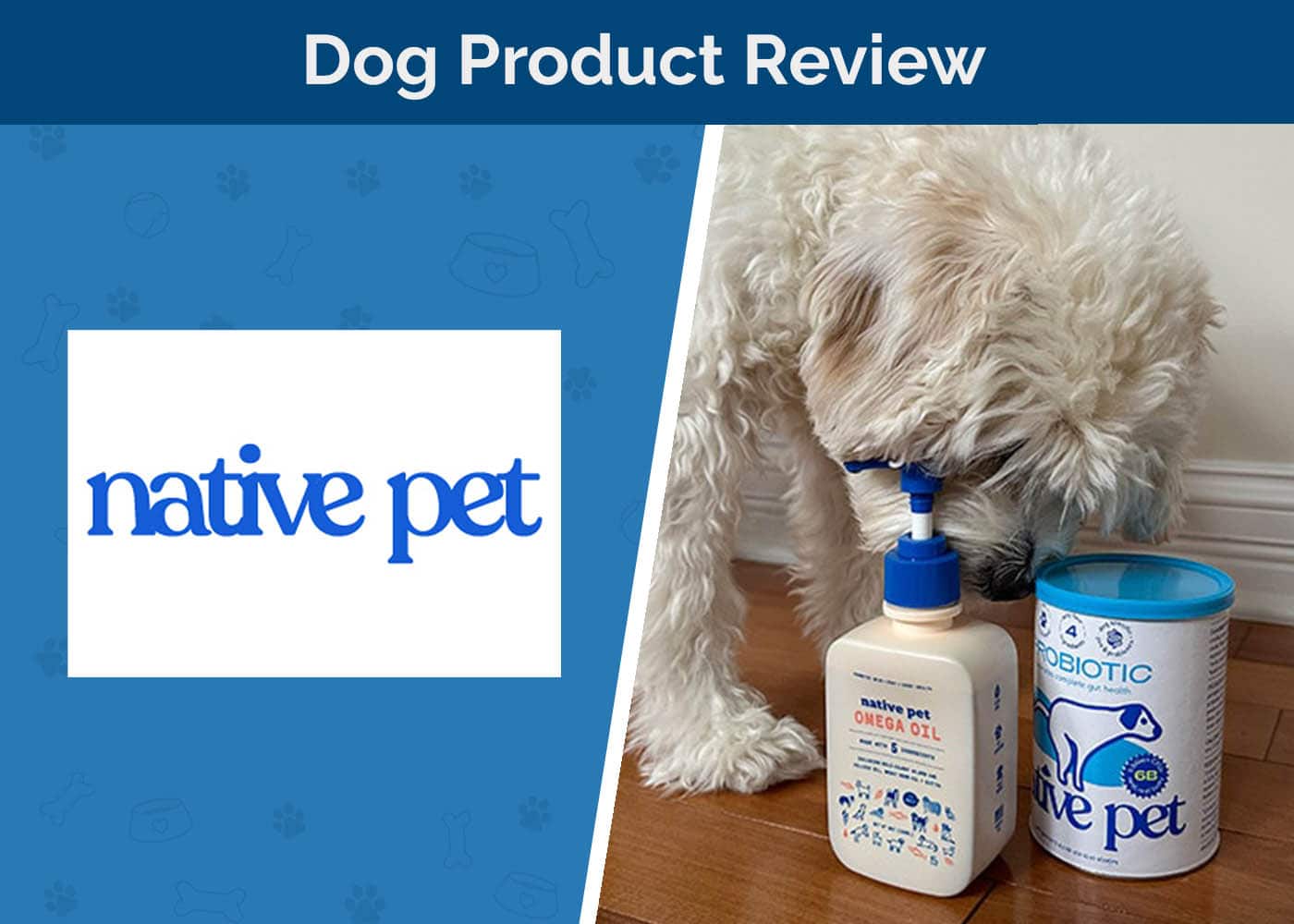Can Dogs Eat Green Apples? Vet Reviewed Nutrition Facts & FAQ
Updated on
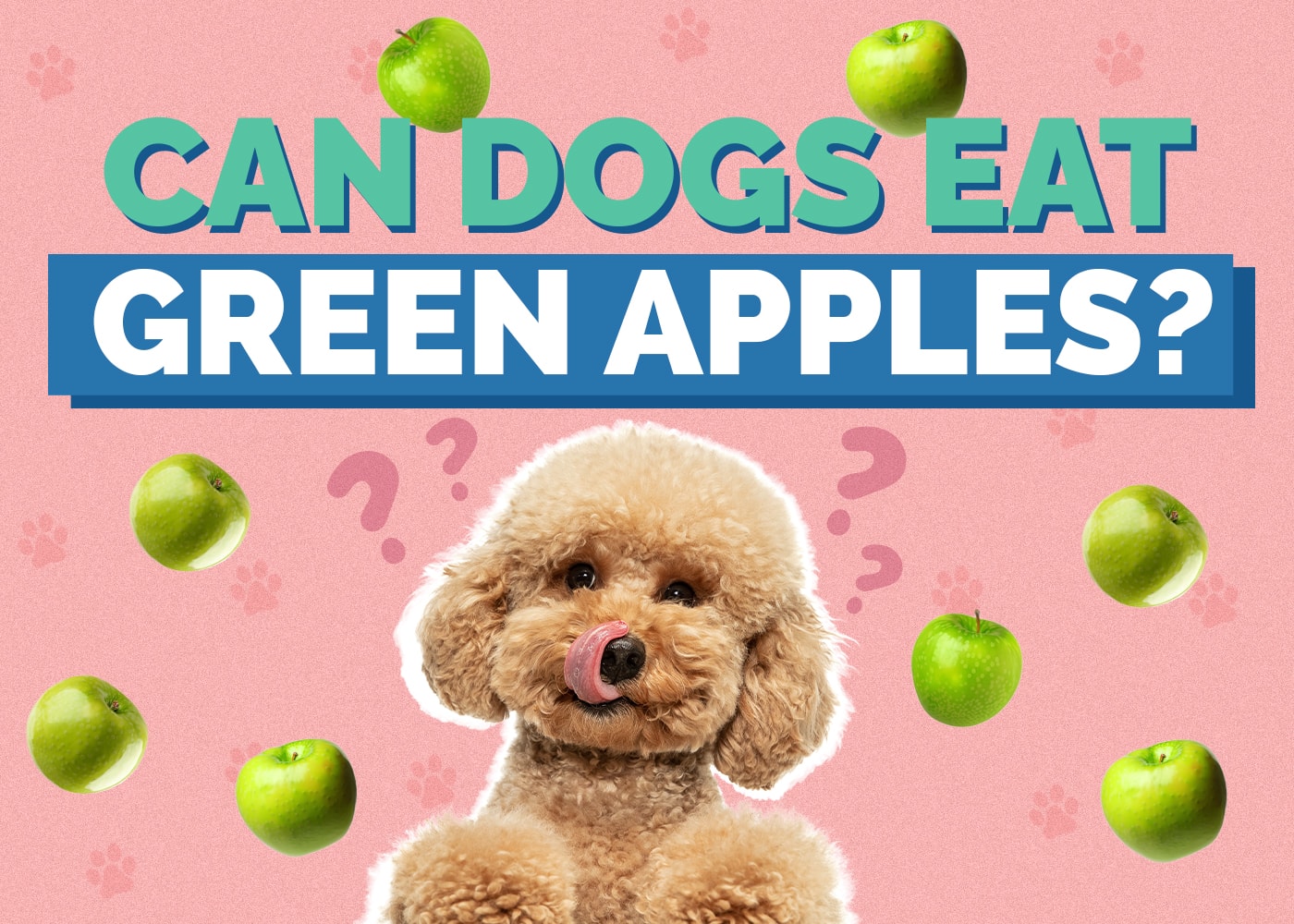
Apples are great additions to people’s diets for many reasons. Not only are they healthy, but they are also sweet, crisp, and juicy, which makes them excellent snacks. Dogs tend to want to eat anything that we do, including apples. But it’s always a good idea to first make sure any food that you decide to feed your pet is healthy for them or at least won’t harm them.
So, can dogs chow down on green apples? Yes! Green apples (without the seeds and core) and all the other types of apples that you can find at your local grocery store are perfectly healthy for your dog. That said, they should be offered in moderation and always as treats instead of as a significant part of their diet. Read on to learn more!
The Benefits of Green Apples for Dogs
Apples contain many of the vitamins and minerals that dogs need to thrive, such as vitamin C. However, these are not in high concentrations, especially when you consider that, depending on their size, your dog won’t be eating more than a quarter to half of one medium-sized apple at a time (and even this is likely too much for most dogs). Still, there are several health benefits that your furry pal can enjoy by eating the occasional apple as a snack.
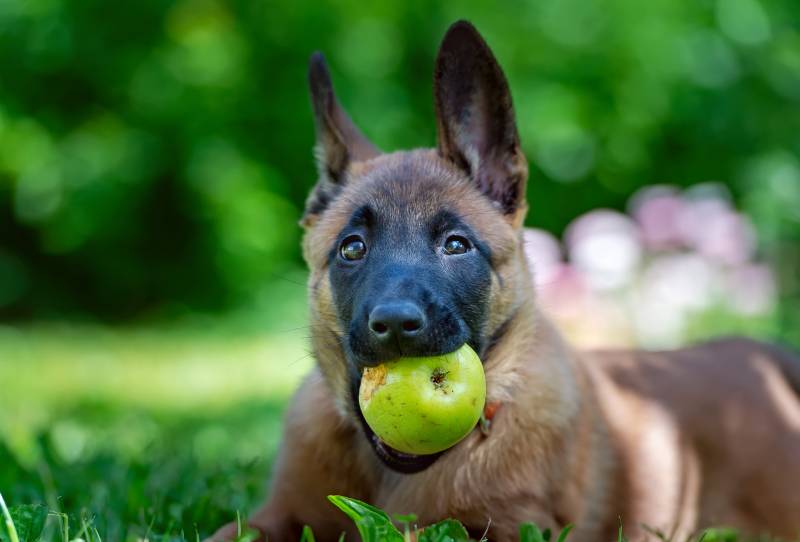
Improved Digestion
Green apples are a good source of dietary fiber, which is important for regulating the digestive system. Fiber helps scrub the digestive system of “gunk” and keep things moving so bathroom breaks are regular throughout the day. Optimized digestion makes mealtimes more enjoyable and helps ensure that nutrients are properly absorbed.
Maintenance of a Healthy Weight
Apples are low in calories, which means eating them on occasion as snacks is not likely to increase your dog’s weight. Replacing high-calorie snack options with green apple slices will cut calories and help your dog lose weight if it’s necessary. Green apples make great treats during training sessions and can provide extra energy that will help keep your pup in shape.
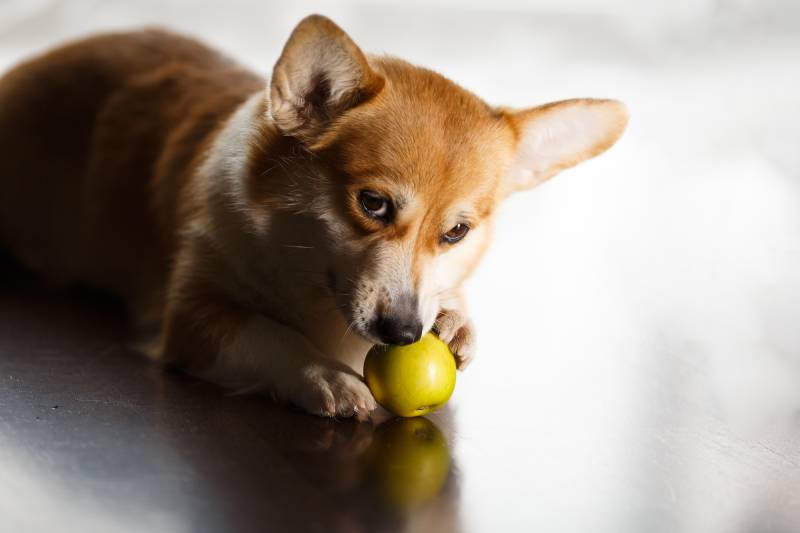
Improved Dental Health
Apples are crunchy, so they help scrub plaque off a dog’s teeth when chewed. This helps reduce the risk of your dog developing an infection or gum disease as time goes on, especially when they are older. Of course, chewing apples is not a replacement for teeth brushing and other oral healthcare that your dog needs.
Green Apple Nutrition Facts
| Serving Size: 1 Medium Apple | Amount Per Serving |
| Calories | 59 |
| Fiber | 2.5 g |
| Protein | 0.27 g |
| Fat | 0.14 g |
| Sodium | <1 mg |
| Vitamin B-6 | 0.028 mg |
- Source: USDA
Can Dogs Eat Applesauce and Apple Chips?
Processed apple products are typically less nutritious than a plain green apple. They usually contain additives, like sugar, fat, and artificial flavors, that are unnecessary for a healthy diet. However, if you can find applesauce, apple chips, or dried apples that don’t contain any added ingredients, you can offer a small amount to your dog at snack time. Alternatively, you can make applesauce at home for your furry friend by simply blending a cut-up apple and water.
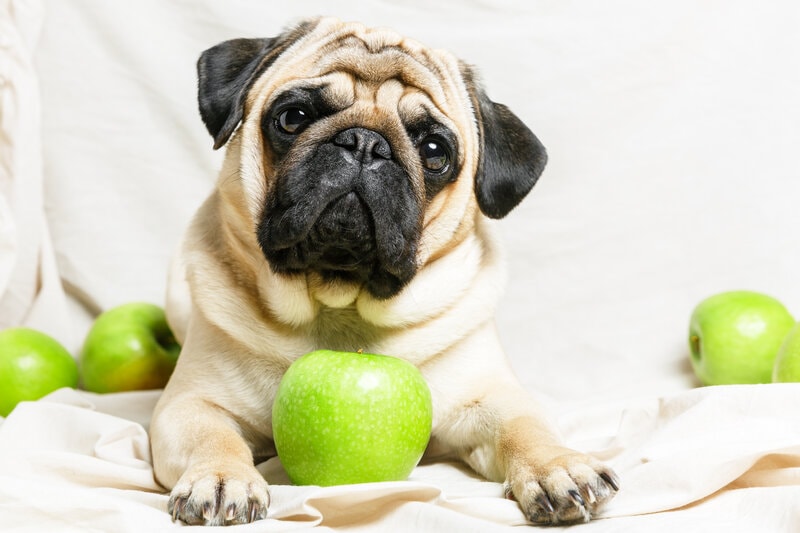
How Many Green Apples Should a Dog Eat?
While green apples are healthy for dogs to eat as snacks, you don’t want to only treat your dog with apples. For most dogs, a slice or two of a green apple is plenty.
How to Safely Prepare Green Apples for Your Dog
Apple peels are safe for dogs to consume, and in fact, that’s where more antioxidants can be found. However, apple seeds contain traces of cyanide, which could poison your dog if the seeds are chewed and eaten in large amounts. The core of the apple also poses a choking hazard. Always wash an apple before preparing it to ensure that bacteria and germs are removed. Rinsing can also help get rid of any pesticides on the skin.
Once the apple is rinsed, simply cut it into chunks or slices, being careful to discard the seeds as you work. Keep in mind that the apple skin can get caught between your dog’s teeth, so you may want to peel an apple before serving it if the skin might be a problem. You can feed the cut-up apple to your dog as-is, or add the apple to a doggy cookie recipe for extra texture and taste.
This might sound obvious, but you should never feed moldy or rotten apples to your dog. In both situations, your dog could get poisoned and there may be severe consequences. Moldy apples can contain mycotoxins, and the ingestion of rotten apples can cause poisoning from the ethanol that is produced during fermentation. You should avoid letting your dog eat fallen apples since they will likely eat the seeds and core as well.
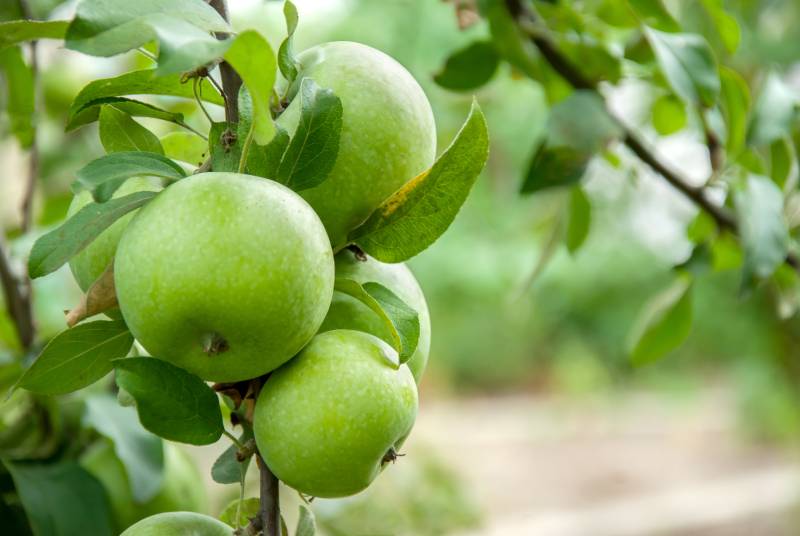
Other Fruits That Your Dog Might Enjoy
Although some fruits like grapes and avocados are toxic for dogs, green apples are among the many fruits that your dog can enjoy occasionally.
- Blueberries
- Cantaloupe
- Bananas
- Peaches
- Pears
- Pineapple
- Strawberries
- Watermelon
Like with green apples, these fruits should only be offered to your dog in moderation, as a supplement to a high-quality diet and not as a replacement for any of the foods that they typically eat during mealtimes.
Finishing Up
Most dogs love eating apples, and this fruit is a healthy snack option to consider offering as long as you always remove the seeds and core. However, like every other snack that you feed your dog, be mindful of how much you’re feeding them. Eating too many apples at one time can result in unwanted side effects, like diarrhea.
- See Also: Can Dogs Eat Ranch?
Featured Image Credit: Left (Dog) – Pexels, Pixabay; Right (Green apples) – Evgeny Karandaev, Shutterstock


